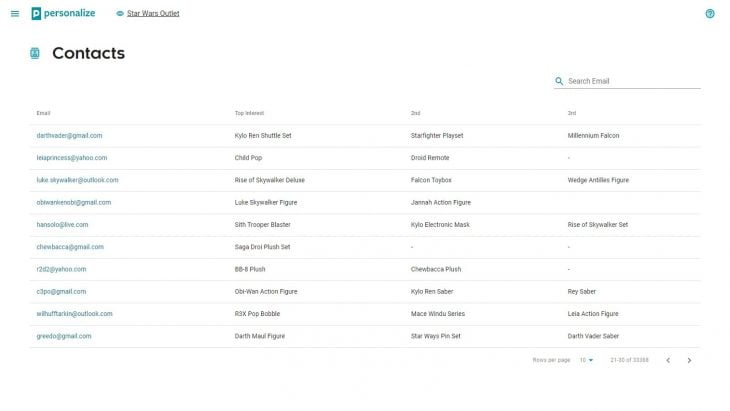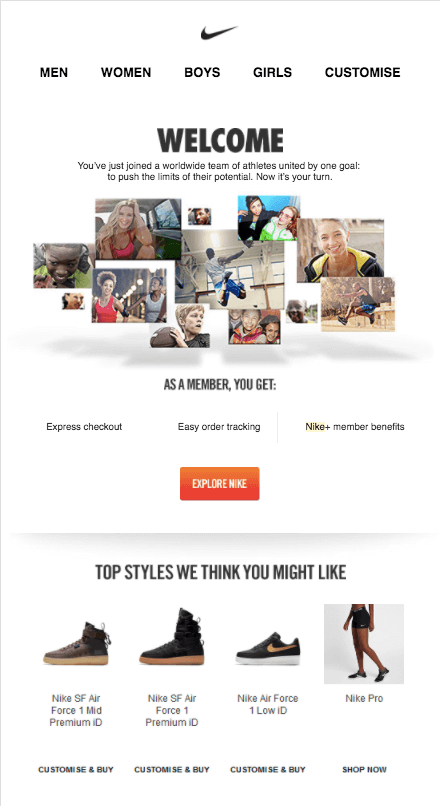In this article, we will be discussing five essential tools/processes that might be missing in your ecommerce stack, which if implemented correctly, can increase your store’s conversion rate significantly.

Website loading time is one of the most essential factors Google considers when ranking a website in search results.
According to this post, your web page must load within 3 seconds to get maximum rewards from search algorithms when getting ranked. It is important to know that on average the results on the first page of Google loads within 1.65 seconds.
As the first step, you need to check the loading time of your ecommerce site. To do that, there are several tools to measure the speed of a website. But, one of the most common tools is Google Lighthouse. It provides us a complete audit of a web page. Meaning that instead of just collecting the performance information, Lighthouse also helps us with tips on how to improve it.
It comes with Google Chrome by default. So, you don’t need to install anything separately. Follow the below steps to quickly audit any web page.

Here you will see a “Generate Report” button through which you can start the auditing of web pages. Remember that you can only audit web pages that are served using HTTP or HTTPS protocol.
At this point, you will have some performance insights about your ecommerce store. Now, we will look at ways to enhance it.

The WordPress WooCommerce plugin is pretty common to set up an online store. It enables us to pick some ready-made WordPress speed optimization plugins like Autoptimize, W3 Total Cache, and Smush. You will find similar tools for other ecommerce platforms like Shopify as well if you are using one.
Search engines like Google and Bing use hundreds of factors to determine which page to rank higher in results. The website’s speed is just one of them. Frankly speaking, search engines usually don’t reveal their ranking factors to reduce the impact of artificial techniques. Their main objective is to provide the best user experience.
So, in order to optimize an ecommerce shop for search engines, we have to follow the best practices that are already verified by many researchers. To get started, its recommended to analyze the current SEO status of your website. Here are some online tools that might help you perform a complete SEO analysis.
These tools will help you fix some common issues. But, it’s just the beginning towards performing well in search results. As an ecommerce store owner, it’s your task to research keywords that are used by your potential customers. And finally, rank on them to improve your ecommerce conversion rate.
Here are some tips to increase organic traffic on your website and eventually boost sales.
Personalization of the ecommerce website is something that will significantly boost the conversion rate. The main aim of personalization is to provide a targeted user experience at an individual level.
Let us imagine a scenario where a visitor comes to your store to buy a gaming PC. Now, it is highly possible that he/she may also want to get a gaming mouse, keyboard, and a headset. So, wouldn’t it be great if we proactively recommend all the relevant products to them? This is definitely a win-win situation for both the buyer and seller.
Basically, you can enhance the user experience by doing things like:
There are some ready-made solutions like Product Add-Ons for WooCommerce and AI Shopping Personalization for Shopify that will give store owners an edge over competitors. For instance, with Shopify’s AI Shopping Personalization, you can get an overview of your customer base’s interests with the help of AI (Artificial Intelligence). Based on the user interaction on the site, you can also see in real-time what are the top five products that each individual is interested in. This is very valuable information that will help you send personalized emails that will promote the products the customer is already interested in.


Nowadays, augmented reality (AR) is getting more mature and if integrated into your ecommerce stack, it can further add value to your customers by providing an interactive experience. For example, if you are running an online fashion store, you can offer tools to your customers so they can perform the body measurement themselves. If you run a Shopify store, then you can use Shopify AR to try augmented reality for your customers.
Are you building your email list with potential customers?
If “No”, then you are probably leaving money on the table.
Email automation is a process that enables you to automatically send personalized emails to users based on their activity (new user, one-time buyer, frequent buyer, etc).
Let’s suppose a new visitor has just joined your website. Now, a possible email marketing workflow starts with a welcome message containing information and links to a getting started guide or store catalog. You can then follow-up with a sequence of emails every week to build trust.

Similarly, what if a customer had added some products to their cart, but didn’t checkout? A great marketing tactic is to send an automatic “Abandoned checkout” email that will remind them about the abandoned cart and even offer an additional incentive like a discount code to encourage them to buy.

All of these tactics are only possible if you have set up some sort of email automation mechanism. Otherwise, writing/sending emails manually is a daunting task when you have a massive email list.
You might be wondering how to get started by automating the interaction with your email list. You can easily get started by using one of these well-known email automation tools Mailchimp or MailerLite. Both of these email services are very easy to set up, even for novice users who do not have any technical background.
Both tools have a very easy and intuitive UI to work with and come with pre-made email templates as well as the functionalities to customize them and add your brand’s identity. Among all the marketing tactics, email automation is one of the most effective ones in terms of its ROI and should definitely be included in your ecommerce stack.
Customer support is a required service regardless of the product you are selling or the size of your business. It includes pre-sales questions that will convince a visitor to purchase a product and after-sales support for customers.
Without any doubt, this can be one of the most resource-intensive tasks in your business. But, with the latest enhancements in the field of AI, we can build chatbots that can efficiently answer common questions of your customers.
It means that you don’t have to hire dedicated staff anymore to answer the customer questions. The best advantage of chatbots is that they don’t get tired or need breaks. They will be available 24/7 and also the customers don’t have to wait in long queues for their turn. All of them can be handled simultaneously without any issues. Building an AI chatbot from scratch can be tough for businesses. Instead, it is preferred to use an existing service provider that can easily integrate with your system.
ChatBot offers different solutions that are specifically designed to handle customer support, sales, education, and marketing more efficiently. You just have to provide some initial set up preferences to customize the chatbot according to your business. One of ChatBots’s great features is that they have designed some templates for different use cases that are ready for deployment right away.

Since the Covid outbreak, consumers are buying more stuff online than they usually would. So with this shift, it’s the best time to upgrade your existing tech stack and adopt new technologies and concepts to increase your ecommerce conversion rate. In this article, we reviewed five of the most prominent strategies that can help you achieve this goal.
https://dinarys.com/blog/technology-stack-for-e-commerce-websites
https://www.shopify.com/enterprise/six-must-have-technologies-to-build-the-best-ecommerce-tech-stack

LogRocket lets you replay user sessions, eliminating guesswork around why users don't convert by showing exactly what users experienced. It captures console logs, errors, network requests, and pixel-perfect DOM recordings — compatible with all frameworks.
LogRocket's Galileo AI watches sessions for you, instantly identifying and explaining user struggles with automated monitoring of your entire product experience.
Start proactively monitoring your ecommerce apps — try LogRocket for free.
Would you be interested in joining LogRocket's developer community?
Join LogRocket’s Content Advisory Board. You’ll help inform the type of content we create and get access to exclusive meetups, social accreditation, and swag.
Sign up now
Learn how to integrate MediaPipe’s Tasks API into a React app for fast, in-browser object detection using your webcam.

Integrating AI into modern frontend apps can be messy. This tutorial shows how the Vercel AI SDK simplifies it all, with streaming, multimodal input, and generative UI.

Interviewing for a software engineering role? Hear from a senior dev leader on what he looks for in candidates, and how to prepare yourself.

Set up real-time video streaming in Next.js using HLS.js and alternatives, exploring integration, adaptive streaming, and token-based authentication.